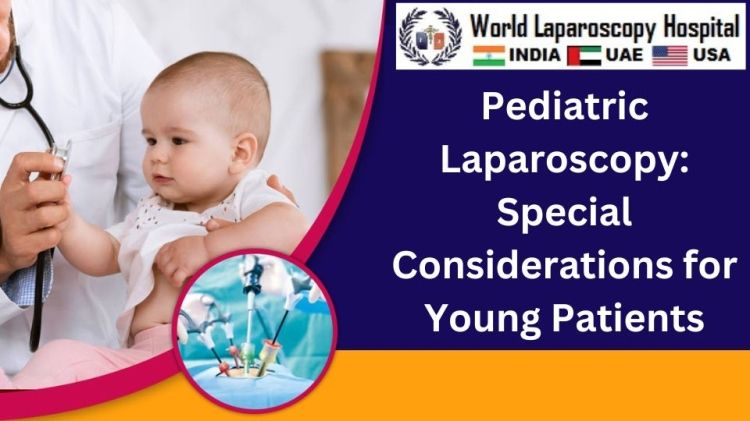Pediatric Laparoscopy: Special Considerations for Young Patients
Introduction
Pediatric laparoscopy, a minimally invasive surgical technique, has revolutionized the field of pediatric surgery. With smaller incisions, reduced pain, and faster recovery times compared to traditional open surgery, laparoscopy has become a preferred method for various diagnostic and therapeutic interventions in young patients. However, the unique physiological and anatomical considerations of pediatric populations require a nuanced approach to ensure the safety and efficacy of these procedures.

Instrumentation and Port Placement in Pediatric Laparoscopy
The delicate nature of pediatric anatomy demands specialized instruments tailored to the size and characteristics of young patients. Miniature laparoscopic instruments, often ranging from 3 to 5 millimeters, are utilized to navigate the smaller spaces within a child's body. Moreover, the strategic placement of ports is crucial to accommodate the limited working space in pediatric abdomens, avoiding interference with developing organs.
Anesthesia Considerations
Administering anesthesia to pediatric patients requires a delicate balance. Factors such as age, weight, and physiological differences play a role in determining the appropriate anesthesia dosage. Anesthesia management in pediatric laparoscopy demands meticulous attention to detail, with a focus on maintaining hemodynamic stability while ensuring rapid emergence from anesthesia to facilitate a smoother recovery.
Unique Challenges in Neonatal Laparoscopy
Neonatal laparoscopy presents distinct challenges due to the fragility of neonatal organs and their susceptibility to damage. Surgeons must exercise extreme caution to avoid injury to developing structures. Additionally, the limited size of neonatal patients necessitates specialized equipment, including miniature trocars and endoscopes designed for the smallest of patients.
Choosing the Right Procedures for Pediatric Laparoscopy
While laparoscopy is a versatile technique, not all pediatric conditions are suitable for this approach. Careful consideration must be given to the type of procedure, patient age, and disease pathology. Common pediatric laparoscopic procedures include appendectomy, cholecystectomy, and hernia repair. The decision to opt for laparoscopy should weigh the potential benefits against the unique challenges posed by each case.
Managing Intraoperative Complications
Pediatric laparoscopy demands a high level of expertise, as complications can arise during the procedure. Vascular injuries, bowel perforations, and complications related to carbon dioxide insufflation are among the potential risks. Surgeons must be prepared to promptly address these issues to minimize the impact on young patients.
Postoperative Care and Recovery in Pediatric Patients
Postoperative care is a crucial aspect of pediatric laparoscopy. Monitoring for complications, managing pain, and ensuring a smooth transition to oral intake are paramount. The reduced postoperative pain associated with laparoscopy in comparison to open surgery often allows for a faster recovery, but close monitoring is essential to address any unforeseen issues promptly.
Long-Term Outcomes and Follow-up
Assessing the long-term outcomes of pediatric laparoscopy is vital for understanding the efficacy and safety of the procedure. Follow-up care is essential to monitor for any late-onset complications and to ensure the child's continued well-being. Longitudinal studies contribute valuable insights into the durability of laparoscopic interventions in pediatric populations.
Training and Skill Development for Pediatric Laparoscopy
Given the unique challenges of pediatric laparoscopy, specialized training is imperative for surgeons and the entire surgical team. Simulation-based training, mentorship programs, and continuous education contribute to the development of the skills necessary to navigate the intricacies of pediatric laparoscopic procedures.
Conclusion
Pediatric laparoscopy, while offering numerous advantages, necessitates a meticulous and tailored approach to address the unique considerations of young patients. The development of specialized instruments, advancements in anesthesia management, and a deep understanding of pediatric anatomy contribute to the success of laparoscopic procedures in this population. As technology and surgical techniques continue to evolve, the future holds promise for further refining pediatric laparoscopy, ensuring its safety and efficacy for the smallest and most vulnerable patients.






